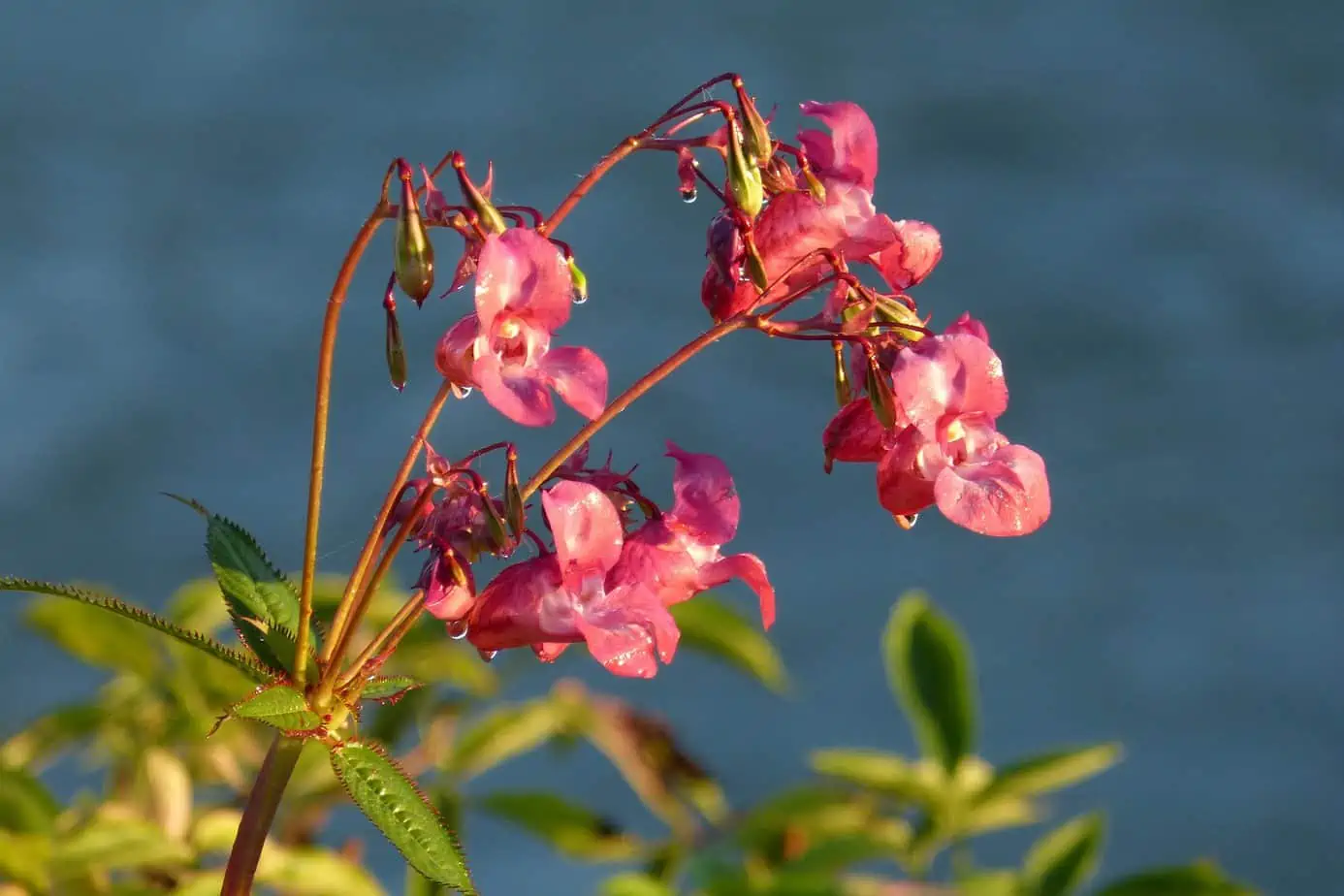Indian knapweed – an invasive species
Impatiens Glandulifera at first glance does not seem ugly at all. Large flowers in purple, attractive leaves – the Indian is a thoroughly eye-catching plant, which now stands in whole bushes on many golf courses. That’s exactly the problem: the plant, sometimes called the farmer’s orchid, is considered a so-called invasive species that has spread throughout German-speaking countries and is reproducing so rapidly and vigorously that it is displacing native species. It therefore does not meet with much approval from nature conservation authorities and greenkeepers. The recommendation of experts at authorities and environmental associations is: Constant displacement and removal is the order of the day – even on the golf course.
“This is undoubtedly a problem on golf courses,” notes Dr. Gunther Hardt, who heads the Golf Association’s Biodiversity Committee in Germany. “Beekeepers often find the touchweed on golf courses to be a positive, and golfers like it too, but conservation officials don’t like to see it at all because it’s extremely aggressive.” However, the touch-me-not proves to be stubborn and very persistent, because it spreads extremely quickly and effectively in continental Europe, although it originally comes from the western Himalayas. Indeed, one plant can develop up to 4000 seeds, which it can scatter up to seven meters. And: The seeds are germinable for six to eight years.
Simple tear out is not a problem
At the same time, the removal is not difficult at first: the plants, which grow up to 1.50 meters high and have stems as thick as a thumb, are very easy to pull out of the ground. Ideally, this happens before the plant begins to bloom. However, conservation officials recommend staying on the ball and either mowing down jumping weeds to ground level or just removing them completely by fall.
However, due to the sometimes large amounts of touchweed on golf courses, greenkeepers are often no longer able to control the plant. This then displaces native species, especially on moist forest, shrub and roadsides. “Membership drives would be very helpful here,” Hardt notes. A half-day action could already bring a lot here.
Note disposal
The only important thing is the disposal of the grown plants: Simple storage in one place of the golf course is not a problem. Then the seed spreads over the wind. Incineration is one option; conventional disposal, which then costs fees in most cases, is the second alternative. Again, Hardt’s advice is, “It’s best to call the lower conservation authority and ask what kind of disposal they suggest.”
By the way, those who do not take up the fight with the touchweed early, quickly succumb. Then, after a few years, whole areas of the square on hedge edges, in bank and stream areas are interspersed with the large plants. As beautiful as the purple blossom may be then: the diversity of the planting of a golf course is lost with it.







 Image: Real Club Valderrama
Image: Real Club Valderrama